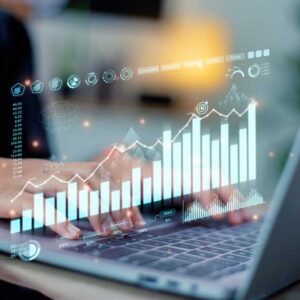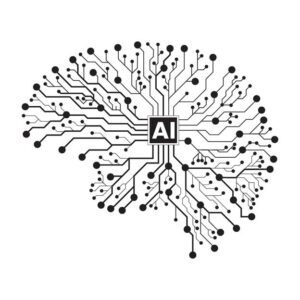Artificial intelligence (AI) has penetrated many organizational processes, resulting in a growing fear that smart machines will soon replace many humans in decision making. Let’s explore various research opportunities and present the framework that enables humans and AI to collaborate and examine how each can bring their own strength in organizational decision-making processes.
Let’s begin with the current social technical challenges and establish the need for exploration.
- Can an Organization rely on decision suggested by AI
- How accurate are these decisions?
- Is this going to replace completely human intervention or compliment or assist?
AI can act in many dimensions and perspective needs to be set while exploring the research.
- as research Tool
- as technological change impacting organization
- as organizational Agent
Most of the researchers use AI algorithms for social media analytics, machine learning algorithms for sentiment analysis, topic modeling, speech and voice analytics and synthesizes the outcomes based on training and testing voluminous data sets.
When a large number of decisions are taken by algorithm; it faces social challenges of fairness, reliability, interpretability, Governance, Accountability etc.
Artificial intelligence (AI) has penetrated many organizational processes, resulting in a growing fear that smart machines will soon replace many humans in decision making. Let’s explore various research opportunities and present the framework that enables humans and AI to collaborate and examines how each can bring their own strength in organizational decision-making processes.
Let’s begin with the current social technical challenges and establish the need for exploration.
- Can an Organization rely on decision suggested by AI
- How accurate are these decisions?
- Is this going to replace completely human intervention or compliment or assist?
AI can act in many dimensions and perspectives needs to be set while exploring the research.
- as research Tool
- as technological change impacting organization
- as organizational Agent
Most of the researchers use AI algorithms for social media analytics, machine learning algorithms for sentiment analysis, topic modeling, speech and voice analytics and synthesizes the outcomes based on training and testing voluminous data sets.
When a large number of decisions are taken by algorithm; it faces social challenges of fairness, reliability, interpretability, Governance, Accountability etc.

Fairness :
Amazon uses the AI assisted hiring tool and it was observed males were preferred over females. Similarly research was carried out in the legal domain where minorities were detected by Algorithm some protected class were favoured.
Reliability :
Cheats were reported using mask & glasses for face detection algorithms and found that machine learning algorithms wrongly interpreted due to updates in training datasets.
Interpretations :
Deep learning algorithms are black box in nature means you never know the underlying mechanism. When AI algorithms are used for decision making, for example in medicine, it is very difficult to understand for the doctors to interpret. New line of Research there on creating explainable AI or interpretable. The more interpretable we make the algorithm so less accurate you’re making, and there are trade off observed between n interpretive and fairness.
Governance & Accountability :
When we introduce AI decision making into an organization with the kind of governance structure that you want to bring in What if an algorithm is making some errors, who is accountable for those errors? . ML and Deep learning algorithms do a lot of predications and what if it goes wrong? E.g. Driverless cars meet with an accident to whom shall the responsible manufacturer or insurance company or the owner ? Such kind of social technical problem.
Third, AI as an organizational agent. They take decisions, impact the decision and how we design decision making structure and how to make teams where humans and AI are working together and their decisions are able to get it in such a way that they add value to each other through the decision making.
In in order to come up with a framework . It is required to understand
What are the differences between human decision making and AI decision making at the same time, what are the social factors involved.
Design to intricate human and AI decision making as a contingency framework.
Differences between Human decision making and AI Decision Making :
Humans can actually solve loosely defined problems properly, on the other hand for AI, you need to come up with a properly defined problem. That is very specific in nature. Basically, you need mathematical formulation of the objective function and defined outcomes. In reality, problems are very loosely defined.
Second, humans are really good at learning from a very small amount of data and at risk management. That’s the reason we have survived on this planet for so many years.
Deep learning algorithms require large amounts of data for training complex algorithms. These datas in practice are very expensive and annotation of data is not a trivial task .
Next, size of the alternative set matters. If you have a large number of alternatives then humans take small sets of alternatives and ignore the rest and maybe it is biased.
Finally, the decision making speed. So human decision making is comparatively slower as compared to AI decision making for the problems. So, these are the four different distinctions between human and AI decision making that create a framework on how to blend human and AI decision making.
Framework:
Full delegation to AI
AI acts as secretory to humans. This works well when the size of the alternate set is very large , nature of decision is clearly presented by function, cost of delay is high and need to have fast decision – Recommendation systems. E.G. Netflix, Digital advertisements dynamically change based on users experience ,high frequency trading. Humans can cause only delay in decision making in all such scenarios where rapid decisions are required from large alternative sets.
Sequential decision making
Output of AI goes to humans. When alternative sets are large, AI first takes decisions and reduces the alternative sets and then humans take the decision from a small set of alternatives. Human judgement and context play a very vital role in decision making. Crowdsourcing of ideas; here, the problem is put on a platform and thousands provide solutions, now use AI for filtering optimal solutions and then pass it to humans with domain knowledge to make appropriate decisions. Another case of Hiring and Health monitoring – Google receives millions of resumes , filters all resumes and then passes it to humans for further intervention .
Human comes before AI
Decision can be learnt.The can be useful for sport analytics. In football, say to buy some players, a small set of potential players are identified by humans then sports analytics used to their permanence and consistency of past games and its outcomes are used by selectors for the final selection.
Aggregate the decision of AI and Human
Human can learn from AI and AI learns from Human .So, both are correcting each other and that means a lot of error cancellation.

Summary:
Three dimensional research directions are presented where AI can be used as a tool and their ML & deep learning algorithm analyzes the large datasets to answer big problems. Second AI as technological change – fairness, accountability, trust, decision making, human centered AI research may be explored. Third, AI Organization agent. Aggregation of yours and AI can help to solve the problem.


